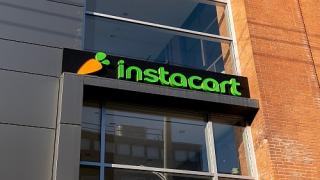News Briefs
Virginia Lowering Grocery Sales Tax Rate
Virginians will see lower grocery bills in the new year thanks to a lower sales tax rate. The state is repealing its 1.5% grocery tax, which covers sales of food for home consumption and certain essential personal hygiene products, beginning Jan. 1.
According to the Virginia Department of Taxation, most staple grocery items and cold, packaged prepared foods qualify for the reduced sales tax rate. Alcoholic beverages, tobacco, prepared hot foods packaged for immediate consumption on or off premises, and seeds and plants used to grow food for home consumption do not qualify for the reduced rate.
[Read more: "Colorado Grocers Can Now Sell Wine"]
A 1% grocery sales tax that goes to local jurisdictions and funds things such as schools, fire and police departments, will remain in place throughout the state.
“I think the layering of sales tax, of grocery taxes, of food taxes on top of property taxes, car taxes and real estate taxes is really a tough thing for Virginians,” said Governor Glenn Youngkin.
"Remember, businesses and people make a decision on 'where I want to live,’" Youngkin continued. "And we are now turning the tide in getting people and businesses to stay in Virginia, but we're going to need some help from the localities as well."
Following Virginia's move, there are 12 states that still impose a grocery sales tax, including Arkansas, Illinois, Missouri, Utah, Alabama, Hawaii, Tennessee, Oklahoma, South Dakota, Idaho, Kansas and Missouri. According to the Center on Budget and Policy Priorities, 10 of those states offer a lower tax rate for groceries than the general sales tax rate or provide a tax credit. Alabama, Mississippi and South Dakota, meanwhile, tax groceries at the full state sales tax rate.
Weis Markets Names Amanda Bauman Director of Marketing
Weis Markets has promoted Amanda Bauman to the position of director of marketing. In her new role, Bauman’s responsibilities include the oversight of the company’s loyalty marketing, data analytics, social media and digital marketing programs. She succeeds Maria Rizzo, who was recently promoted to the position of VP of marketing and advertising.
[Read more: "Weis Markets Adopts Cloud-Enabled Commerce Solution"]
Bauman has worked in several advertising and marketing positions at Weis Markets since 2003. Before her promotion, she was manager of digital marketing, overseeing the development and launch of online shopping, the upgrade of the Weis app, and the enhancement of the grocer’s growing e-coupon program.
Sunbury, Pa.-based Weis Markets operates 197 stores in Pennsylvania, Delaware, Maryland, New Jersey, New York, Virginia and West Virginia. The company is No. 61 on The PG 100, Progressive Grocer’s 2022 list of the top food and consumables retailers in North America. PG also named it one of the Top 10 Regional Operators to Watch in 2022.
FDA Releases Updated Food Code for Retailers
The U.S. Food and Drug Administration (FDA) has issued the 2022 edition of the FDA Food Code that provides guidance to state and local authorities and retailers to help mitigate foodborne illness risks at retail and offers a uniform set of national standards for retail food safety.
For the first time, the 2022 Food Code specifically addresses food donations, which is part of the Biden-Harris Administration’s National Strategy on Hunger, Nutrition and Health. Rolled out in September, the National Strategy provides a road map of actions that the federal government is taking to end hunger and reduce diet-related diseases by 2030, all while reducing disparities.
One-third of all food in the United States goes uneaten. To prevent food loss and waste across the food supply chain, and help ensure safe, good-quality food gets to those who need it most, the 2022 Food Code has clarified that food that is stored, prepared, packaged, displayed and labeled according to Food Code safety provisions can be donated.
Other significant changes to the 2022 Food Code include:
- Adding sesame as a major food allergen to reflect that the Food Allergy Safety, Treatment, Education and Research Act of 2021 established sesame as the ninth major food allergen.
- Informing consumers, in writing, of major food allergens as ingredients in unpackaged food.
- Adding labeling of major food allergens in bulk food that is available for consumer self-dispensing.
- Revising the definition of intact meat, including enhancements to clarify time/temperature cooking requirements.
Those interested can view a full list of the Summary of Changes.
While it is a model code that is not required, the Food Code has been widely adopted to help eliminate the most important food safety hazards in retail and foodservice.
The Biggest Google Searches of 2022
It’s as much of a tradition as a midnight “Auld Lang Syne”: A trends recap of the soon-to-end year.
A look at Google's top searches for 2022 provides a glimpse at what was on consumers’ minds – and leading their fingertips on screens – over the past 12 months. Overall, the early 2022 trend of Wordle topped the list, followed by the term “election results” and the celebrity name Betty White following her passing.
Relevant to the grocery and retail industry, the top terms related to product shortages were, in order, diesel shortage, baby formula shortage, tampon shortage, Adderall shortage, sriracha shortage, food shortage, cream cheese shortage, avocado shortage and lettuce shortage.
Consumers continuing to cook at home following the pandemic and during a year marked by continually spiking food costs also looked to Google to find buzzworthy recipes. Chief among those recipes in 2022 – peaking in November – was sugo, an Italian sauce made with tomatoes, basil, garlic, onion and olive oil.
Other trending dishes for the year according to Google’s data were Cincinnati chili, “Marry Me” chicken, quick pancakes, mango pie, green goddess salad and grinder sandwiches. Celebrity recipes also made the top 10, including a Jennifer Aniston salad and Bella Hadid sandwich, while a spaghetti dish inspired by the streaming show “The Bear” also caused consumers to look for how to make it.
[Read more: "Do Viral TikTok Trends Translate to Grocery Purchases?"]
Social media platform TikTok also released its findings on foods trends of the past year based on its content. Leading the way was cloud bread with 3.4 billion views, followed by baked oats with 1.3 billion views, charcuterie boards with 1.2 billion views, pasta chips with 1.1 billion views and mug cake with one billion views. Throughout the year, grocers may have heard shopper queries about other TikTok-inspired fare that racked up views, like birria tacos, pink sauce and butter boards.
Instacart Cuts Internal Valuation By 20%: Report
Online grocery platform Instacart has cut its internal valuation to around $10 billion, according to two people familiar with the situation, as reported by The Information. The new valuation is 20% lower than the one it had in October and nearly 75% lower than the price that investors paid for shares early last year, when its paper valuation was $39 billion.
In October, the 10-year-old delivery firm also delayed its much-awaited IPO amid market uncertainty, as reported by Reuters.
In addition to an unfavorable business climate, Instacart has recently been affected by more competition in the grocery delivery space as an increased number of retailers use multiple delivery companies, including DoorDash, Uber Eats and Grubhub.
In a recent interview with Progressive Grocers, Instacart CEO Fidji Simo said that the company is focusing on adding solutions for grocers that focus on the three pillars of the business: the Instacart App, the Instacart Platform and the advertising arm.
San Francisco-based Instacart partners with more than 1,000 national, regional and local retail banners to facilitate online shopping, delivery and pickup services from more than 75,000 stores across North America on the Instacart Marketplace.
New AI Solution Optimizes Shelf Facings
Retail shelf intelligence firm Pensa Systems has introduced a new AI solution for CPGs designed to improve their retail shelf facings. The solution provides a continuous view of actual products on retail shelves across several stores.
Pensa developed the capability to help CPGs optimize their shelf facings to ultimately improve visibility and revenue growth. Traditionally, the allocation for facings has been based on estimates of sales volume and velocity gleaned from previous point-of-sale data and simulations.
[Read more: "Why Grocers Can't Afford to Ignore Shelf-Edge Technology"]
After its AI distinguishes between products on a shelf, the Pensa solution analyzes the video stream of images to provide a highly accurate view of inventory. According to Pensa, this new approach correlates real on-shelf product availability with the number of facings per product.
“Optimizing the shelf is now possible in a new way leveraging the practical power of computer vision and AI,” explained Richard Schwartz, Pensa’s president and CEO. “Basing facings analysis on a highly-accurate and granular view of what’s on the shelf and available for sale heralds a new era of brands and retailers working closely together to optimize facings for mutual benefit.”
Based in Austin, Texas, Pensa works with a variety of CPG brands and retailers, such as General Mills, Johnson & Johnson, Anheuser-Busch, InBev, Unilever and Circle K, among others.






